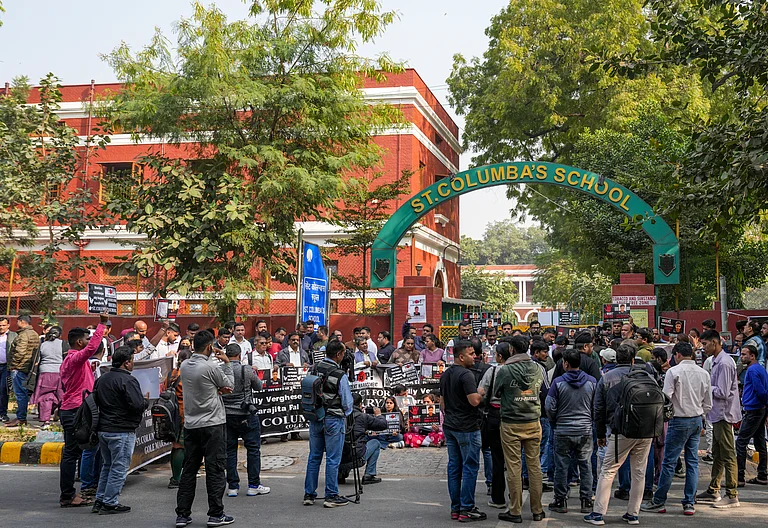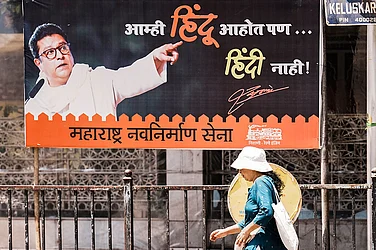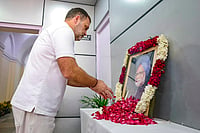In February this year, at the Union Budget session, Finance Minister Nirmala Sitharaman announced several development projects and schemes for the education sector, including the development and augmentation of the Eklavya Model Residential Schools (EMRSs). The Ministry of Tribal Affairs originally established the EMRS plan in 1997-98 as an equal opportunity effort for Scheduled Tribes (STs) to provide high-quality education facilities in remote and heavily inhabited tribal regions. In her announcement, Sitharaman proposed to increase the number of existing EMRSs from 689 currently to 740, for which 38,800 new teachers will be recruited.
After the budget presentation, the 44th Social Justice and Empowerment Standing Committee Report was presented in the Parliament in March, in which some new suggestions were given for existing and prospective EMRSs. The committee noted that in order to create a conducive environment for imparting quality education, there is a requirement of 15 acres of land per school to strengthen infrastructure so that essential facilities such as state-of-art classrooms, well-equipped laboratories, a library, administrative facilities for the principal and staff, indoor and outdoor sports facilities, and sanitation and drinking water facilities can be provided to the students. Other facilities include hostels for boys and girls, kitchen and dining halls and residential quarters for teaching and non-teaching staff, etc.
The committee also noted that the cost per school for setting up the school complex including hostels and staff quarters should be increased from Rs. 2,000 crore to Rs. 3,780 crores in plain areas and from Rs. 2,400 crore to Rs. 4,800 crores in hilly areas, Northeast and Left-Wing Extremism (LWE) affected areas. A recurring cost of up to Rs. 1.09 lakhs per student per year will be paid for running the schools and for the expenses of the students that include uniforms, books, stationery, food, etc.
The History of Eklavya Schools
As the government strives to expand its educational endeavours, one of the most visible initiatives has been alleviating inequities between urban and rural communities. The introduction of the EMRSs has been a critical initiative in this respect. The approach was designed to provide a pathway for indigenous children’s entire development, emphasising not just classroom programs but also physical fitness, personality development, and values. The concept is based on the deprivation distance principle, with 50 per cent of seats allocated for female students and students from Scheduled Castes (SCs), Scheduled Tribes (STs), and Other Backward Classes (OBCs). The EMRSs, wholly supported by India’s central government, operate in areas with a sizable indigenous population, generally in inaccessible terrain. They are located at taluka levels in tribal localities and offer an integrated curriculum that includes science, mathematics, social science, English, and computer technology. The model’s adoption is a noteworthy endeavour to satisfy Article 46’s Special Constitutional Provision for the education of all Scheduled Tribes of India.
The government of India, especially the Ministry of Tribal Affairs, governs the admission procedure to EMRS institutions. The authorities utilise a particular testing method to assess the applicant’s intelligence quotient (IQ), which takes into consideration elements other than academic knowledge. The system also examines the student’s physical health, emotional health, and social setting. The candidates must be members of a Scheduled Tribe, Scheduled Caste or OBC in order to be admitted. One important component of the selection process is that students must remain in the school’s dormitory, which helps them acclimatise to their new surroundings and offers a favourable setting for studying.
An Eklavya school may accommodate up to 480 pupils. These schools accept students from grades VI through VIII. It was declared last year that by the end of 2022, every block having a 50 per cent ST population and at least 20 per cent tribal population will have one Eklavya school. As per the norms, 60 students per class can be divided into two sections with 30 students in each class from class VI to class X, and three sections with 30 students each in the streams of Science, Commerce, and Arts into class XI and XII.
The State of Existing Eklavya schools
The current state of the EMRSs is based on statistical data that represents the program’s successes and problems. First, the number of students placed in and enrolled in the EMRS programme has grown. The initial aim for the 12th Five Year Plan (2012-13 to 2016-17) was 187 schools, whereas the 13th Plan (2017-18 to 2021-22) established a target of 462 more schools. The 14th Plan (2022-25) envisions the establishment of one EMRS in each block with a population of more than 50 per cent ST by 2024, for a total of 740 such schools.
According to news reports from last September, there are 684 sanctioned EMRSs around the country, with 378 of them operational. Out of the 684 schools, 503 were sanctioned after Prime Minister Narendra Modi’s BJP administration took office in 2014, but only 212 of these 503 schools are completely operational, representing less than half of the total. Just 46 of the 212 schools have their own premises, with the remaining 166 operating in rented houses or other government structures.
In a list released by the government on November 1, 2022, it mentions that there are 686 EMRSs across the country, out of which 392 schools are functional and 294 schools are non-functional.
According to the recent data available on the EMRS website, 690 EMRSs already exist across the country out of which only 401 schools are functional, and 1,13,275 children are studying in these schools. Out of these students, 56,107 students are male and 57,618 are Females.
A pressing concern of the EMRSs across the country is the availability of skilled teachers. In a major start to teacher recruitment, the ministry had advertised 3,400 teaching posts in EMRSs in around 15 states and union territories in 2021, to be filled by an exam conducted by the National Testing Agency (NTA). But soon, the exam for these posts was put on hold due to COVID-19, after which this recruitment was completely cancelled mid-2022.
The finance minister had talked about the recruitment of 38,800 new teachers but one look at the figures of teachers working in already existing schools suggests that the promises of the government are visible only on paper. According to a report published in The Hindu, only 4,000 teachers have been appointed in 378 schools while a total of 11,340 teachers are needed. Moreover, about 70 per cent of the recruited teachers are either contractual or deputed from other government schools.
Inconsistent and Insufficient Data
According to data relating to EMRSs provided by the Ministry of Tribal Affairs before the Standing Committee on Social Justice and Empowerment (2022-23), the government maintains there are currently 690 EMRS sanctioned across the country, out of which 401 EMRS are functional. While providing data about the affiliation of these schools, the government says that only 320 schools are affiliated, out of which 277 schools are affiliated with the CBSE board and 43 schools are affiliated with State Education Boards. Here, the government has failed to avail the affiliation-related documents of 81 other EMRS out of claimed 401 functional ones.
Based on the most current statistics on the website of Ministry of Tribal Affairs, there are a total of 56,107 male students and 57,168 female students enrolled in EMRSs across the country. There is no data regarding transgender students on the webpage. However, on the EMRS website, it is sometimes being displayed that some transgender students study at EMRSs and sometimes, it is shown that they are not, and this data seems to change on a daily basis.
On the 6th of April, another webpage of the same website displayed that only 3,573 students are studying in the EMRSs out of which 1,763 are males and 1,810 are females. Just beside the table, it is also written that there are currently 8,544 staff in EMRSs.
Continued Neglect of ST Children
Despite the growing number of schools, the initiative has yet to deliver the expected impact in terms of boosting ST kids’ access to good quality education. The academic achievement of EMRSs in comparison to other schools in India has been severely assessed, and the results in most cases demonstrate that the EMRSs’ performance is still inadequate. According to a few Achievement Surveys of 2017, the efficiency of EMRSs was lower than the national average, with the highest score of just 52.8 per cent, slightly higher than the national average for ST pupils.
The study results additionally showed that the programme prioritises academic success over extracurricular activities and physical development programmes. Moreover, schools face the difficulty of insufficient staff, with only one teacher for every 30 pupils, resulting in less teacher-student contact time. In certain schools, a lack of infrastructure such as cutting-edge classrooms, labs, and other learning facilities jeopardises the quality of education delivery. Despite enough funds sanctioned by the state for the development of EMRSs, the governing bodies have struggled to satisfy the basic infrastructure criteria of schools.
The failure of the Indian government to ensure that the EMRS programme is executed properly reflects a mix of causal variables including infrastructure development. The Eklavya Model Residential Schools are intended to be contemporary, pleasant, and well-equipped boarding schools. Unfortunately, in most cases, indigenous students find it difficult to continue their education due to a lack of sufficient infrastructure and other essential facilities. The EMRSs should not be the final stage of indigenous pupils’ formal education. The government should provide a smooth transfer from these schools to other institutions where students can finish their studies. The Indian government’s improper use of funds for the EMRS system may also indicate a broader lack of empathy for the country’s tribal populations, who are often among the poorest and most neglected.
(Views expressed are personal)
Vikram Raj is an independent journalist working on conflicts in India



























